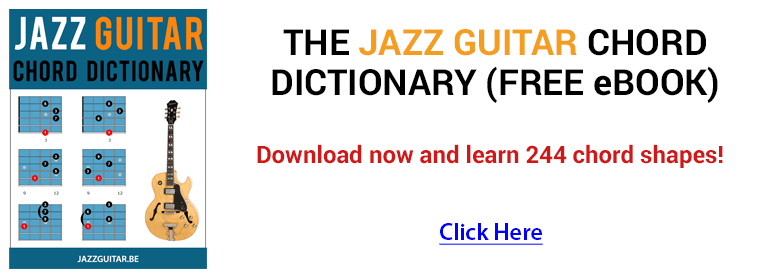-
I knew you wouldn't be able to resist that catchy thread title. Hehe. But now that you are here: seriously, do you ever feel a need to play a b4 or a #4 over a min7 chord? You won't find those notes in Dorian, Phyrigian, Aeolian, Dorianb2. Not until you get to the fourth mode of harmonic minor would get a #4. And you would have to go to the third mode of harmonic major to get a b4. I was trying to get deep deep deep into the sound of all the different minor modes by playing hours of So What. And I noticed that you can pick either b2 or 2 and either b6 or 6, but you couldn't really mess with the 4. So, leaving enclosures and other bits of chromaticism aside, you avoid these notes don't you?
Last edited by jster; 10-09-2013 at 03:54 PM.
-
10-09-2013 03:51 PM
-
The #4 is also known as the b5, the hippest note in the minor pentatonic blues scale. So that one ought to work on a min7 chord. As for the b4, well no one says it´s easy to play a major third over a minor chord, but it all depends on context: Is it a rest note? Is it used for enclosure? Is it part of a line that is supposed to sound "out"?
-
#4 -- I agree, it's hip over a min7. It's a tritone thing.
b4 (M3) -- I won't comment on the bebop minor scale other than to point out this is the note added to Dorian to form that scale.
You can hang on the #4. The b4, not so much!
-
I always try and avoid playing Eb. I can't stand that note.
-
Fm chord pairs derived from scales
Major
II------Fm Gm // Ab Bb
III---Fm Gb // Ab Bbm
VI---Fm Gdim // Ab Bbm
Melodic Minor
I------Fm Gm // Ab+ Bb
II-----Fm Gb+ // Ab Bb
Harmonic Minor
I------Fm Gdim // Ab+ Bbm
IV----Fm G // Ab Bdim
Harmonic Major
III-----Fm Gbm // Ab Bbb+ (A+)
IV-----Fm G // Ab+ Bdim
Over static harmony, scale derived chord pairs give a quick snapshot of available colors.
Some other scales with Fm
Diminished Scale
I-----Fm D
Augmented Scale (EFG#ACDb)
II------Fm A
F Minor Blues Scale
Fm Bma7(no 5th)
D Minor Blues Scale
Fm Dsus
It is also common to superimpose other chord sequences, the most common being dominant relations to the static chord but many things are possible. These superimposed harmonies can provide a context for pretty much any note.
-
But you can't leave enclosures and chromaticism aside, they are both an important part of the picture, and why you can never really say there is such a thing as a "wrong" note. I will play any tone at any time over any chord, and find a way to make it work. If I'm not using all 12 tones in my soloing at any given moment I feel I'm doing something wrong.
 Originally Posted by jster
Originally Posted by jster
-
I'm up to 8. 4 more to go!
 Originally Posted by Guitarzen
Originally Posted by Guitarzen
-
So would you work it into Dorian, Aeolian, Phrygian, and Dorianb2? Or is it just a blues thing?
 Originally Posted by BigDaddyLoveHandles
Originally Posted by BigDaddyLoveHandles
-
You can play any note over any chord if it is in the right context and fits the melodic line you are trying to play. Your ears should be able to guide you. Some outside tones can be hung on and some can only be used as passing notes. It is important to take into account the movement in the harmony rather than to look at which notes "fit" over single chords.
-
I like to use it as a blue note resolving to the 5th, like this lick on a Dm7:
--4--5---------------
---------6--3--------
----------------------
----------------------
----------------------
----------------------
Then you can take that as a starting point and develop it:
---4-5-4-5--------------------------
------------6-3----------------------
----------------5-2-1-2-1-2--------
------------------------------3------
--------------------------------5----
-------------------------------------
Tritone shapes are also a cool concept. I started using these after studying Djangos music. Since the tritone shape in this case will alternate between the b5 and the very stable tonic, it is something you can get away with sounding musical in most cases:
--------------------
--------------------
--------7-----------
------6-------------
----5---------------
---------------------
Try combine it with a typical bebop lick around a Dm7 for instance:
----------5-8-5-6-7--
--------6-------------
------7---------------
----6-----------------
--5-------------------
----------------------
That's how I like to do it when I want to work in new stuff. See how it fits into the harmony for you to exploit it in a way that makes sense. Develop first a very simple idea, then weave that idea into longer statements. Then it becomes integrated and it starts coming out on its own in new and unexpected ways.
When dealing with such unstable intervals, try to find the shortest pathway to resolution first and learn to use that. Then gradually add other resolutions. Once you know the obvious resolution, like this resolution to the fifth that I showed, you will start to hear new resolutions without having to practice them.
-
Thanks Amund. Just to make sure, that last lick ends on the 6th? It is funny you mention tritone licks. I have been trying for a while to make a two octave tritone lick of chord tones from a dom 7 chord sound good for a while now with limited success. I finally got it to sound good today in a bebop tune.
Thanks Bako. But what's a chord pair exactly? I count four chords.
Big Daddy, can you give me a non-blues example of where you might "hang" on a b5?
-
Yes.
 Originally Posted by jster
Originally Posted by jster
Following the rules, it would work best on a II-chord or a II-V.
But the effect is even greater when used on a chord that is diatonically aeolian in nature, like a tonic minor since the major 6th doesn't belong there diatonically but our ears are accustomed to the dorian minor in jazz as the default minor sound.
-
jster,
a pair is as you correctly observed should contain 2 chords.
For the modes with an Fm chord I listed also an alternative extension pair based on 3 5 7--4 6 8
which is why there are 4 chords on a line (2 pairs).
-
Sorry bako, I'm just not following. So you have 3+3 notes. Doesn't that leave out one note from the scale? And so how does that tell us all our options?
-
Yes, 3+3=6, a triad pair has 6 of 7 scale notes.
With the 7 note scale modes:
Ex. Fm Gm is missing Eb but Eb is included in the pair alongside Ab Bb which in turn is missing a G.
This doesn't tell us all our options, I don't know about anything that does.
I was trying to piggyback off your referencing harmonic minor as a source for the B note and minor modes in general.
The chart was just a modal inventory taking of scales that contain Fm.
-
There are some good examples in Matt's article about tritone "side stepping": http://www.jazzguitar.be/blog/modern...side-stepping/
 Originally Posted by jster
Originally Posted by jster




 Reply With Quote
Reply With Quote



pre-war CC blade pickup bobbin dimensions
Today, 01:33 PM in Guitar, Amps & Gizmos